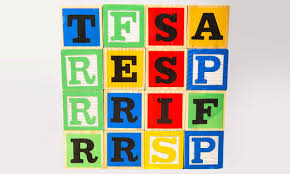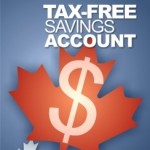 In Canada, there are a number of different types of accounts, or investment vehicles, that an individual can use, and they all serve a different purpose. What follows is a quick discussion regarding some of the different investment vehicles available to Canadians.
In Canada, there are a number of different types of accounts, or investment vehicles, that an individual can use, and they all serve a different purpose. What follows is a quick discussion regarding some of the different investment vehicles available to Canadians.
RRSP
 Traditionally, most Canadians thought that taking advantage of the immediate tax savings of a Registered Retirement Savings Plan (RRSP) for their retirement savings was the smartest choice when it came to saving for their retirement. But now that the Tax Free Savings Account (TFSA) has been around for a while, some people, including tax specialists and personal finance planners beg to differ. Why? Here are some reasons:
Traditionally, most Canadians thought that taking advantage of the immediate tax savings of a Registered Retirement Savings Plan (RRSP) for their retirement savings was the smartest choice when it came to saving for their retirement. But now that the Tax Free Savings Account (TFSA) has been around for a while, some people, including tax specialists and personal finance planners beg to differ. Why? Here are some reasons:
1) The TFSA has perks that the RRSP just doesn’t have. For one, the funds you contribute to a TFSA have already been taxed, and because any earnings you get from your investments are not taxable ever, this is a great vehicle for retirees who want to access funds from their investments with absolutely no tax consequences. Although the RRSP allows you to reduce your income tax payable right now, you have to also consider the future – when you are older and ready to retire – do you want to be paying a lot of tax at that time? Just because you may be retired, it doesn’t necessarily mean that your income will be really low, and it’s likely that the tax rates will continue to increase in the future, so you may end up paying just as much or more tax later. So, when deciding how to save for your retirement, you want to consider not only the present, but also the future consequences.
2) The TFSA won’t likely be around forever. As many other government initiatives have come and gone over the years, it is very likely that the TFSA won’t be here forever, so it’s a good idea to take advantage of this account while it’s still around. If you are in the position to max out your contributions, then by all means, consider it. You also have to understand that you should be treating this account as an investment and not a simple savings account – meaning in order to maximize your potential earnings, and therefore benefit from the tax savings, you should be investing in something that can earn you more than the 1 or 2% interest rate on the regular savings accounts.
Half of non-retired Canadians say they plan to retire by age 65 and expect Canada Pension Plan (CPP) to fund part of their retirement, according to a recent Leger Marketing survey for H&R Block
Canada. But less than one-third actually know how much to expect from CPP every month.
The same group of Canadians listed Canada Pension Plan, Registered
Retirement Savings Plans (RRSPs) and Old Age Security (OAS) as the top three
ways they planned to fund their retirements.
“Canadians who are not retired yet may be relying too much on CPP or Old Age
Security benefits as part of their retirement plan,” explains Cleo Hamel,
senior tax analyst at H&R Block Canada. “And with the recent changes to OAS,
you will not be able to access that benefit until age 67 if you were born on
or after February 1962.”
What is an RRSP Loan?
When you borrow money from the bank in order to contribute to your RRSPs, you are using an RRSP loan. There are different types available. Some need to be paid off within a year, while others you can pay off over a much longer time period. You will often be given a more favorable interest rate if you have your RRSP at the same financial institution that grants you the loan.

